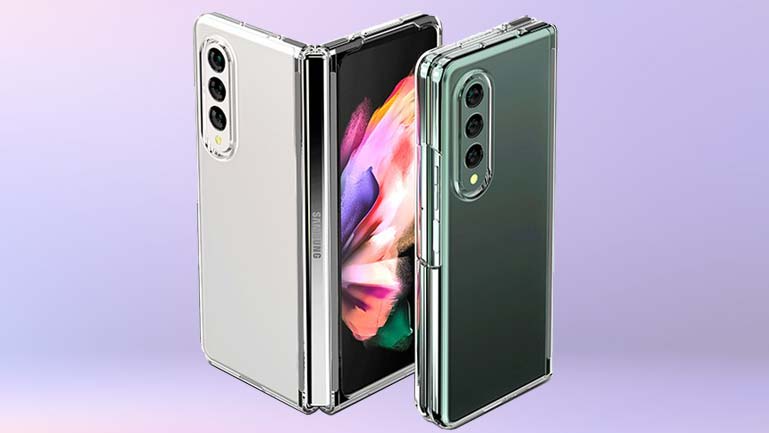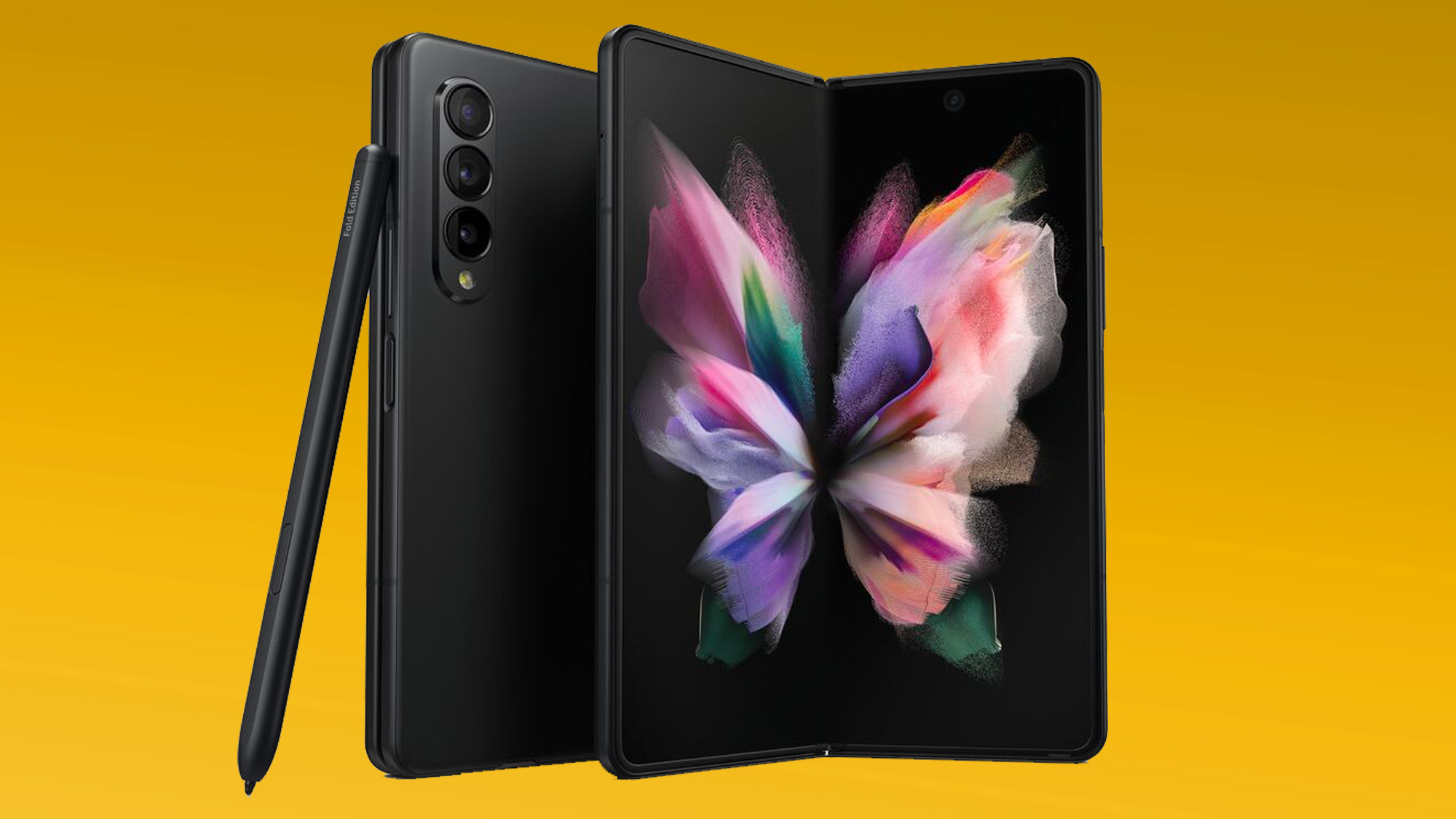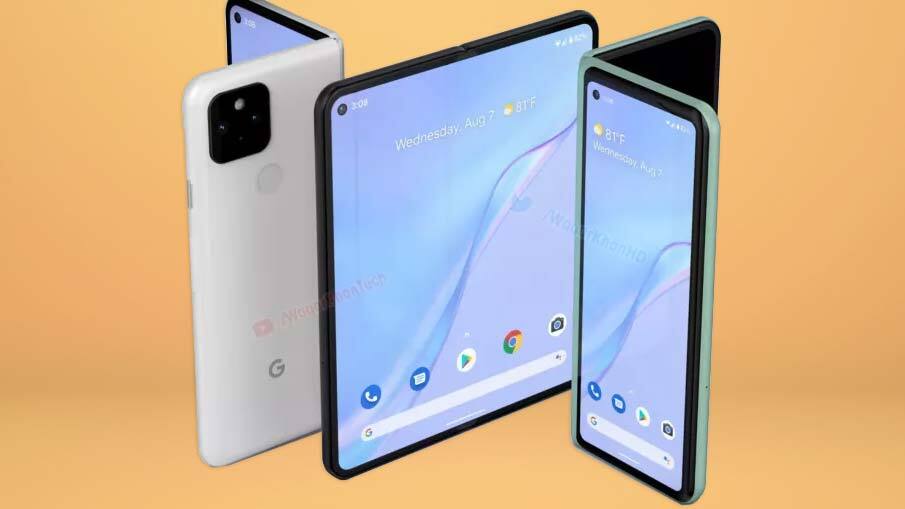Exclusive: Samsung Galaxy Fold 3 will have reduced crease, harder glass and better under-display camera
Samsung is already hyping up its upcoming Galaxy Z Fold 3 ahead of its official unveiling at the Galaxy Unpacked event on August 11. It’s going so far as to allow people to trade in two devices to buy one. It seems that Samsung is wanting to bring its foldable phone technology to an even wider mainstream audience, as the company is hoping to sell six to seven million Z Fold 3s in 2021. Samsung only produced one to two million Galaxy Z Fold 2s by comparison.
Well, per an interview with OTI Lumionics, an advanced OLED materials research firm based in Toronto that’s deeply embedded in the OLED supply chain, we can report that Samsung is aiming to make the Z Fold 3 the most compelling and feature-complete foldable to date. This includes a reduced crease down the center, a more responsive touchscreen and most likely the best under-display camera ever.
“It’s definitely going to showcase how technologically advanced Samsung Electronics is,” said Jacky Qiu, vice president at OTI Lumionics in an interview with Tom’s Guide.
OTI Lumionics has been working on its trademarked ConducTorr Cathode Patterning Material (CPM). It’s a material to help make displays partially transparent to allow for cameras and facial recognition sensors to see through. If the this technology continues to advance, it forgoes the need for punch hole camera cutouts and notches, such as the sizable one that will likely ship on the iPhone 13. According to a press release, OTI Lumionics’ co-founder and CEO Michael Helander said, “Our ConducTorr CPM materials are the only mass production-ready solution to pattern microscopic holes in the cathode to let enough light through for the under display camera and face unlock to function well.”
The Galaxy Z Fold 3 will reportedly ship with an under-display camera, abandoning the punch hole notch found on the Z Fold 2 and the Galaxy S 21.
Okay, so you’re probably asking what the big deal is? Sure, under-display cameras are cool, but why is it important to the Z Fold 3 at large? Well, turns out, by moving the camera underneath the display, it actually changes quite a lot. There’s a certain order of operations that is worth following to understand its impact.
Galaxy Z Fold 3: Why the under-display camera changes everything

Currently, the Z Fold 2, like a lot of other phones, ship with a circular polarizer. This is a material that helps reduce reflections in bright light, improving visibility in sunlight. The problem is that this circular polarizer is 100 microns thick, or about the thickness of a single sheet of paper. With the Z Fold 3, Samsung will use a color filter on encapsulation, a material that can absorb either red, blue or green light to neutralize incoming wavelengths. Korean website The Elec has published similar reports of Samsung utilizing this color filter material.
According to Qiu, this film is significantly thinner than a circular polarizer at only five microns.
“For the whole device, maybe a third, or even half of the device’s thickness in a foldable device comes from the circular polarizer,” said Qiu. He went on to say, “you can make it a lot more foldable, and potentially have a lot less amount of crease there.”
Compared to phones that currently use under-display cameras, like the ZTE Axon 20 5G, the circular polarizer absorbs about 50 to 60% of light. While our reviewer Richard Priday was impressed by ZTE’s under-display camera for what it was, he found that the image was soft, flat and weirdly blurry at times.
“The Axon makes me look like I’m trapped in a magical dream sequence instead of standing in my parents’ backyard; due to its softer focus and positively glowing color temperature,” said Priday in his review.
Because Samsung wanted to create an under-display camera with adequate imaging performance, it needed a material that was thinner and absorbed less light, but by doing so, it gave the Z Fold 3 some extra benefits.
Galaxy Z Fold 3’s thinner color filter means less crease

By reducing the light absorption filter on the Samsung Galaxy Z Fold 3 from 100 microns down to five, that gives engineers in Seoul the ability to add more to the upcoming flagship foldable. It might seem small, as 100 microns is about the thickness of a human hair, but it also means that Samsung can make the front glass a little bit thicker and harder, reducing the crease down the center.
“Imagine you have a piece of paper versus cardboard, right? The paper, it is very easy for you to fold, while a cardboard box is harder for you to fold because it’s thicker, right? So there is a thickness limitation on everything,” said Qiu. According to Qiu, by switching to color filter on encapsulation, it will give the Z Fold 3 more room as the overall thickness of the display module is thinner.
“For example, they have more space to put this under-panel camera, or another examples for them to put a thicker piece of glass,” said Qiu.
Ultimately, Qiu believes that Samsung won’t be able to fully eliminate the crease, but will reduce it significantly, helping the Z Fold 3 find more mainstream appeal outside of South Korea.
How will under-display camera compare to Galaxy S21?

Samsung has always prided itself on its camera technology. It’s no surprise that the Samsung Galaxy S21 Ultra sits at the number-two spot on our best camera phones list. But by going to an under-display camera, buyers should expect some compromises.
While the thin film found with color filter on encapsulation technology will allow a lot more light to move through the display, there’s still layers of material that will sit between the selfie camera sensor and the top glass.
In a standard hole punch camera, there’s clearly transparency from the front glass all the way down to the camera sensor. With early-generation under-display cameras, given that a circular polarizer sat between the glass and the camera, there was only about 20 to 22% transparency according to Qiu. With color filter on encapsulation, that transparency could see anywhere from a 50-100% improvement. Again, while not fully transparent like a hole punch, it’s much better than previous under-display cameras.
“So if you get that 50 to 100% improvement, you might get to 30% overall stack transparency,” said Qiu. “It’s still less than half as transparent as before, but it can, with more powerful backend algorithms, cameras, you can get everything up to par.”
Galaxy Z Fold 3 improved touch, S Pen support and durability

Samsung confirmed earlier this year that the Galaxy Note 21 would not be happening. Fans saw this coming as the company brought S Pen support to the S21 Ultra earlier this year. And Samsung’s president, Dr. TM Roh said that Note features would be coming to other Samsung phones in the future.
For all intents and purposes, seeing S Pen support on the Galaxy Z Fold 3 would not surprise us.
According to a presentation by Ross Young from Display Supply Chain Consultants at the SID 2021 Business Conference in May, the Z Fold 3 will utilize active electrostatic digitizer technology instead of electro-magnetic resonance for S Pen touch functionality. This will improve touch response, which will be handy on the Z Fold 3 which uses softer flexible glass, especially in comparison to the Galaxy Note 20.

Foldable phones are also more delicate than the glass slabs most users are accustomed to. This is because the device has moving parts, pockets for dust and other materials to get into, plus a flexible, foldable display and glass stack. According to Qiu, by pushing the camera underneath the display, not only will it make the glass slightly thicker, it will help in one other way when compared to the Z Fold 2.
“Instead of digging a hole, you can basically use something that is existing, and you just basically stick on the camera behind the display [it] can also improve the structural integrity,” said Qiu.
The removal of a laser-cut hole will eliminate potential weak points on the display stack. Even then, Z Fold 3 buyers should still handle their rumored $2,000-plus handset with care.
Google Pixel Fold and more affordable foldables

According to market research by OTI Lumionics, Google, Oppo and Xiaomi have purchased foldable panels by Samsung Display earlier this year. Whether the rumored Pixel Fold will come out this year remains to be seen.
As for price, Qiu couldn’t point to a specific range, nor could he confirm if it would be less than the Z Fold 2. But Qiu does believe that it won’t be cheap. Online insiders are also pointing to the device being over $2,000.
Even then, the Z Fold 3 is packing in new foldable technology, which will take time to mature on the manufacturing side. And as manufacturing gets better with foldable production, prices should follow. Already, rumors are pointing to the Galaxy Z Flip 3 creeping closer to that $1,000 price point. While a rumored $1,249 isn’t cheap, it’s better than the Galaxy Z Flip 5G’s original $1,449 price.
“What I’m really excited about is if they can start bringing the Fold series outside of their home market in South Korea and be able to see it around town here…” said Qiu. “Because this is definitely a tremendous device that is a head turner.”
For all the latest Technology News Click Here
For the latest news and updates, follow us on Google News.
